This is one of twenty self-guided walking trails being produced in the Horsham District as part of the 2019 Horsham Year of Culture to enhance local knowledge of the area.
The Cowfold trail was created by the Society, supported by Horsham District Community Partnerships Forum and The National Lottery Heritage Fund.
This has bee published as a free leaflet and made available at a number of outlets in the village. A digital version can be accessed here.
Click on the numbered Points of Interest to display more details and explore over 800 years of Cowfold’s unique heritage!
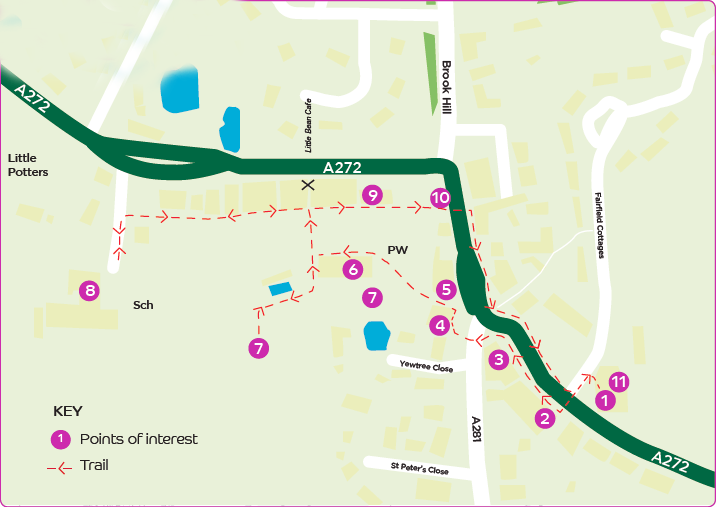
1. Village Car Park
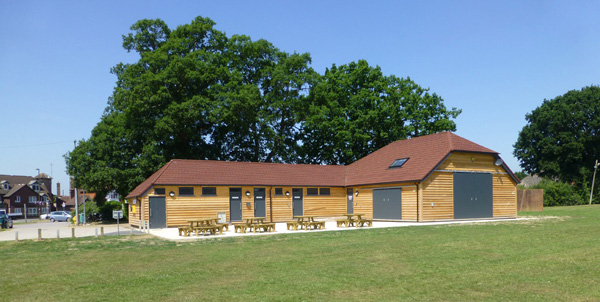
To one side is the Allmond Centre, home to various village clubs. The fields surrounding the centre were given to the village by local benefactors, the Godman family, who built and lived at nearby South Lodge.
2. The Smithy
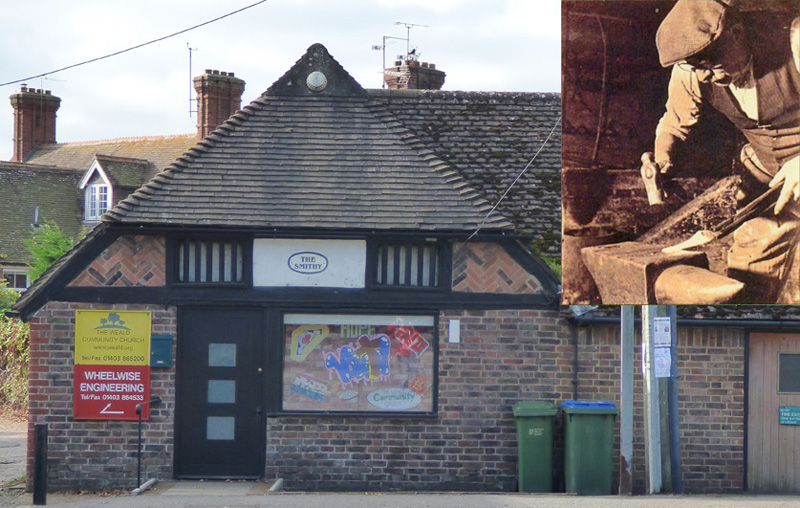
This 19th century building once housed a smithy, last operated by Charlie Belton until it closed in the 1960s. Charlie (pictured above) was one of the only blacksmiths in the country specialising in making replica Iron Age tools. The smithy was one of the local industries that used to make Cowfold self-sustainable.
4. The Stores
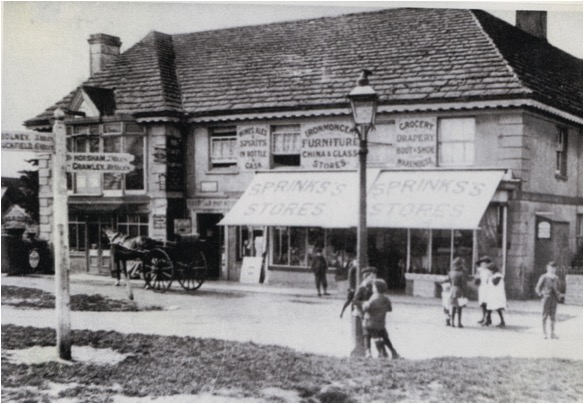
This late 17th century building was the General Stores from 1887 until 2014, the latter years run as a Co-op. From 1887 to the early 1940s it was owned and run by Billy Sprinks and sold just about every household and haberdashery item required.
Situated across the road from the Village Hall it was the gathering place for many Cowfold events and was a focal point of community life.
5. St Peter's Restaurant
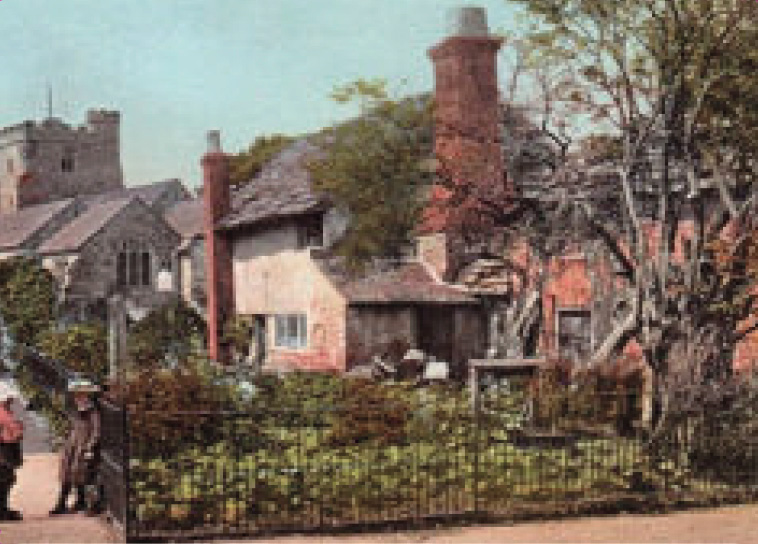
This 15th century building was part of a block that might have been the earliest set of shops in the village. The well in the cottage’s front garden would have been a main source of water. Piped water only arrived in the village in 1938 to supplement a sewage system that had been built in the 1890s.
3. The Village Hall
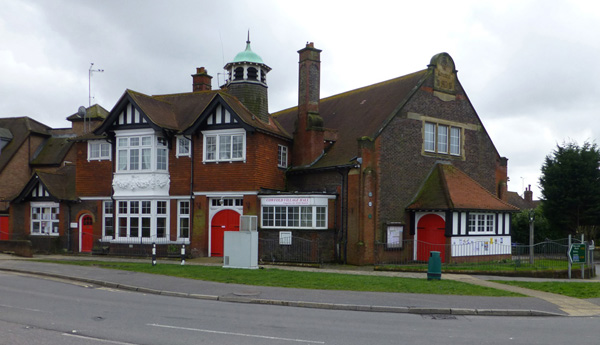
The 19th century village hall was built by local builders, Fowlers, and given by Frederick Du Cane Godman in 1896; in thanks for which the village presented him with a beautifully embossed scroll. It has been the centre of Cowfold life for over a century hosting weddings, annual balls, wartime dances, amateur dramatics productions, and at one time had a library and reading room for the villagers. It is used today by a range of clubs and groups
6. St Peter's Church
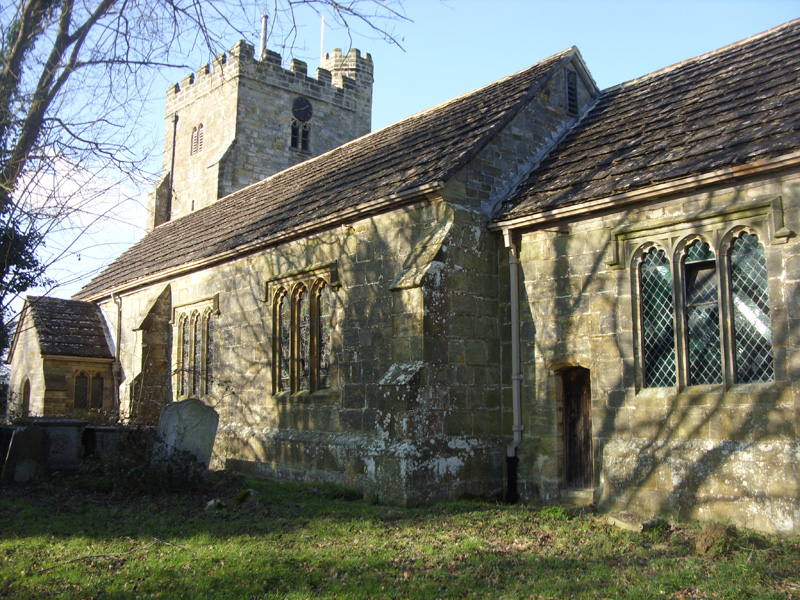
Cowfold church is a Sussex ecclesiastical jewel box. Dating from the 13th century it is likely that the church sits on the site of an older wooden structure. A nave and tower were added in the 15th century, bells have been in use from 1440s and the south aisle was added during the reign of Henry VIII. Rectors of the parish include Robert Scott (1603-1609) who served as James I’s embalmer. The outstanding treasures in the church are the 13th century stained glass windows near the altar, the 15th century Nelond brass (covered for preservation), the 15th century font and stainedglass windows dedicated by Charles Godman to his wo wives, Adelaide and Maud, and another dedicated to Frederick Du Cane Godman.
7. New Graveyard
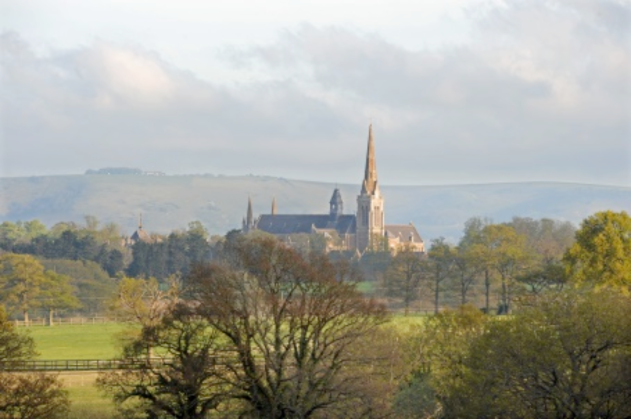
The new graveyard is to be found by taking the path that passes behind the church tower. Follow this path and a track on the right leads to the graveyard entrance. In this graveyard are the graves of Frederick Du Cane Godman, Lord de Clifford the last peer to be tried in the House of Lords and two WW1 and two WW2 headstones tended by the Commonwealth War Graves Commission. From here there is a fine view of St Hugh’s Monastery, the only Carthusian house in the country.
7. Church Pannells and Original Graveyard
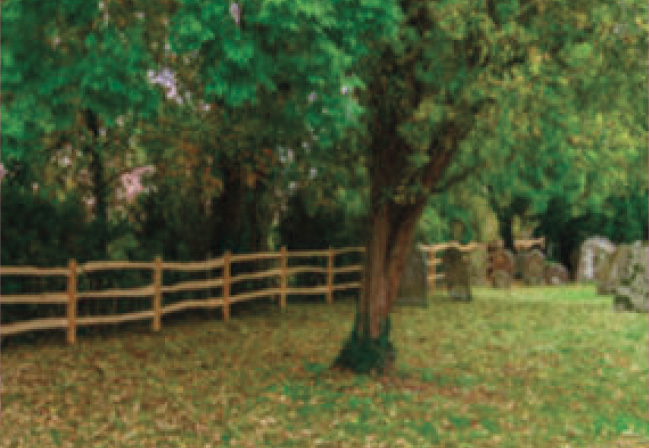
The church has two graveyards. The original churchyard surrounds the church. It is enclosed by a post and rail fence known as the Pannells or “Church Marks”. Dating from the 17th century it is the only one of its type now found in Horsham District. The posts record the houses and farms whose owners at the time were responsible for the enclosure’s upkeep, and are an important heritage legacy. The fence was restored in 2019.
8. St Peter's School
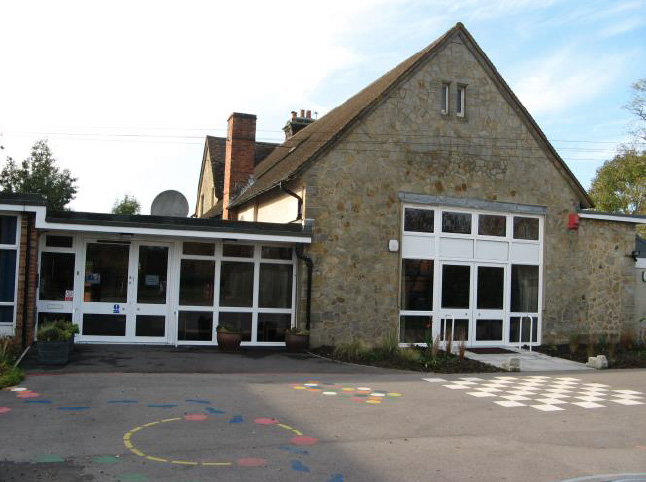
The original school was built in 1870 and by the early 20th century was the only educational establishment in the village. It became a Church of England school in 1901. It was almost completely rebuilt in 1962 and the only part of the original building remaining is the Assembly Hall.
9. Margaret Cottages
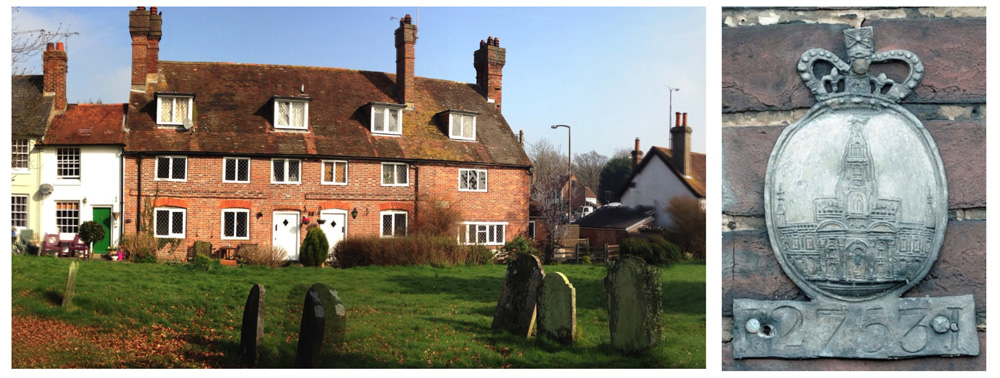
This 18th century building was the village Poor House up to 1926 when it was bought and renovated by Margaret Norris and rented to the village elderly. The Poor Laws ensured that parishioners who were unable to provide for themselves would be accommodated in return for work. Margaret Cottages is referred to in the parish registers for 1773. In that year eight of its inmates died from an outbreak of putrid fever (probably typhus). Look for the Fire Mark on the wall of the house, one of only two in the village. Fire Marks are metal plaques carrying the emblem of an insurance company which had insured the building, and fixed to the front of the building as a guide to the insurance company’s fire brigade.
10. Lych Gate
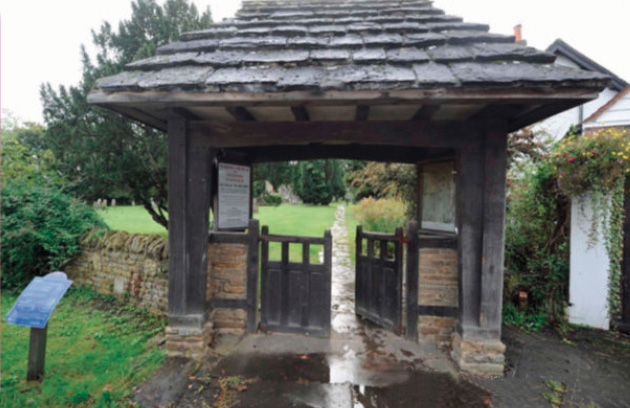
This was built on the site of the old village forge and was designed and funded by the Godman family. It has a map of the Pannells by local artist Penny Hopkins and to the right is the village’s Millennium plaque. To the left of the lych-gate is Sussex House, a white house which was the home of Frederick and Dorothy Farren and their son Bob, very well known Cowfold residents.
Across the road are the old Red Lion hotel and Farren Court. The hotel (now the Co-op), was established in the 1650s but subsequently rebuilt. Farren Court stands on the site of Farren’s garage, for a time in the 1930s the only garage in the village.
11. Finish Point
Return safely to the car park using the pedestrian crossing.
